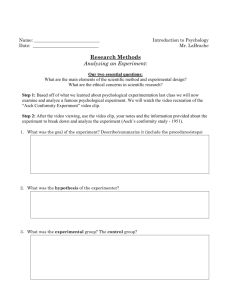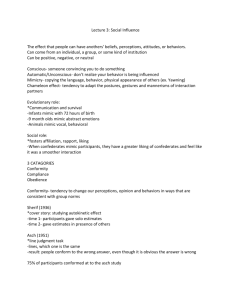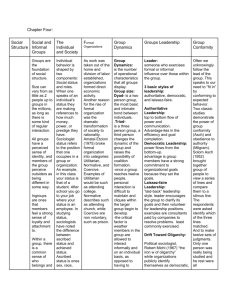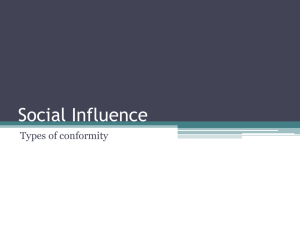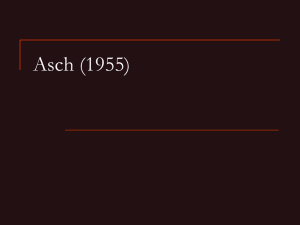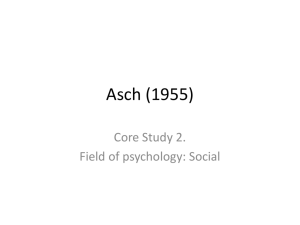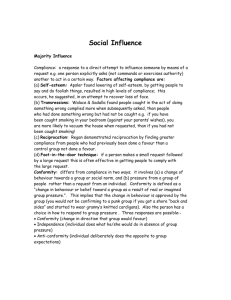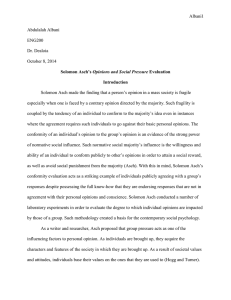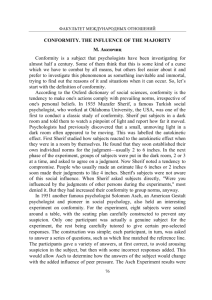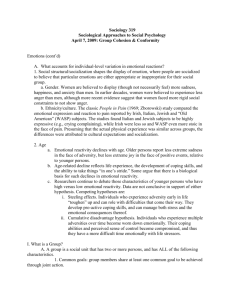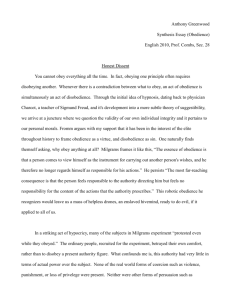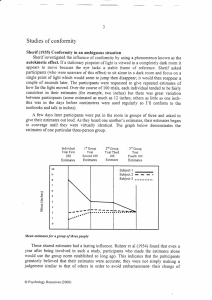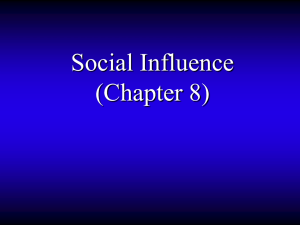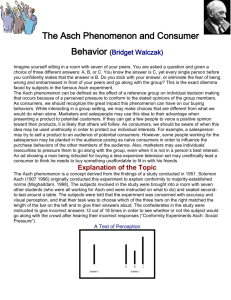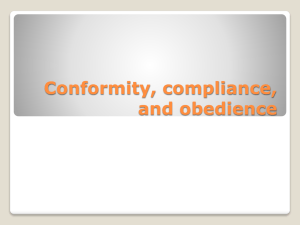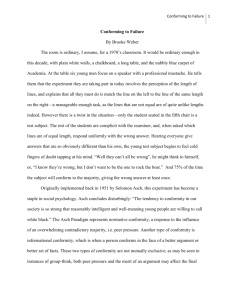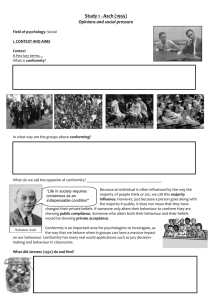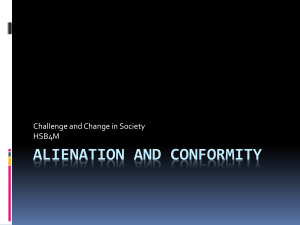Conformity Lesson 2 Asch
advertisement
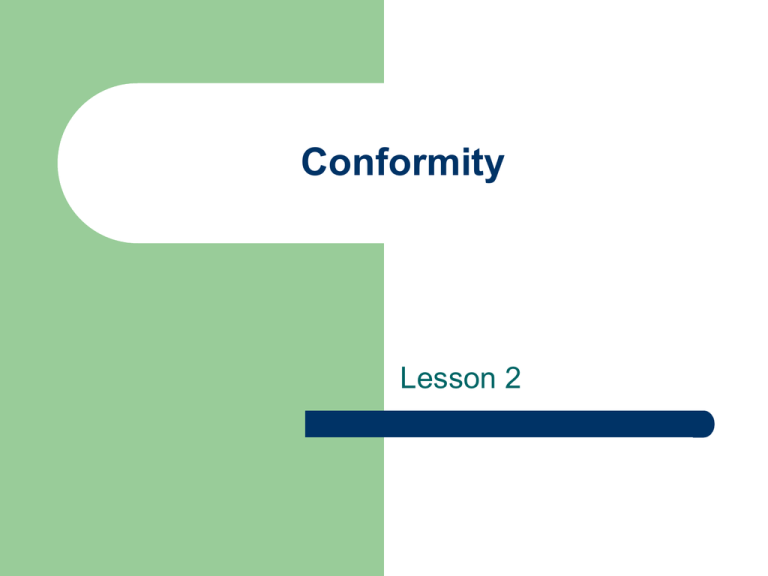
Conformity Lesson 2 Asch’s Conformity Experiment In Sherif’s experiment there was no definte right or wrong answer, this meant there was good reason for the participants to be influenced by others. If they were not sure of the correct answer then there is reason for uncertainty. Sherif’s experiment does not reveal anything surprising about human behaviour. It was this problem that prompted Asch to conduct an experiment with a correct answer. Would people conform to judgements that were definitely wrong? Asch conducted a pilot study by asking 36 people to match the target line with one of the comparison lines. In all trials they got the answer correct – this was definitely an unambiguous task. The task The experiment http://www.youtube.com/watch?v=TYIh4Mkcf JA Aim To investigate whether participants would yield (conform) to the incorrect majority even when the correct answers were always obvious. Method The line judgement task seven male stooges and one naive participant were asked to say aloud which one of three comparison lines were the same length as the target line. The correct answer was always obvious. The genuine participant called out his answer second last. Results In some trials the accomplices gave all the same wrong answers. Asch measured how many times the naïve participant gave a correct answer or conformed to the incorrect majority. Just over 22% of participants gave the correct answer on all 12 occasions. This means that 78% of participants gave at least one incorrect response in line with the majority. About 5% gave the same answer as all the incorrect majority on all occasions. Conclusion Even in unambiguous situations, there may be strong group pressure to conform, especially if the group is a unanimous majority. Why did people conform? Their perception must have been inaccurate and the majority’s accurate. Perhaps they were suffering from eye strain or sitting in a bad position. Not to stand out and look inferior or stupid. Not to be an outcast. To convey a good impression of themselves. Not to spoil the experiment or upset the experimenter. Asch concluded A major factor in conformity was to avoid conflict and social disapproval. Asch (1956) investigated these fears of social disapproval directly by doing a further experiment. The procedure was the same except a stooge gave the wrong answer in a room of 16 naïve participants. Asch found that the naïve participants acted in disbelief and laughed and ridiculed the stooge. Even the experimenter found it difficult to control his laughter. It does therefore seem that the participants were justified in fearing conflict and social disapproval. Evaluation of Asch (+) The findings of Asch’s work have implications for many aspects of group behaviour such as decision making and social interaction. His experiment can be seen as an example of the rigorous standards required in psychological research: participants were studied under highly controlled conditions, Asch was able to carry out statistical analyses on the data collected and his study has been replicated with similar results produced (Neto,1995). Evaluation (-) Lack of validity Ethical issues 2/3 of judgements were correct? Conformity is conveyed as a negative response but it does have beneficial effects. It is important for social stability; group norms provide a standard and expectations of behaviour ensuring a structure and order for social groups.
